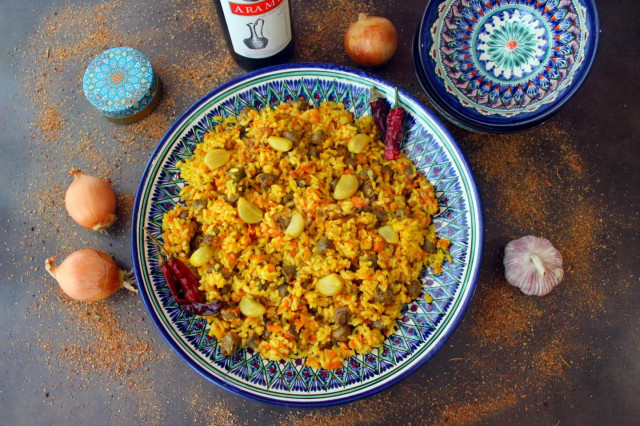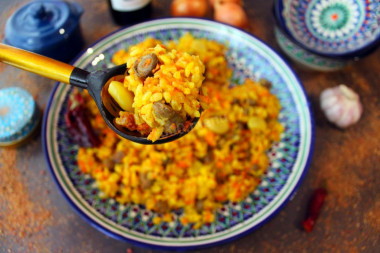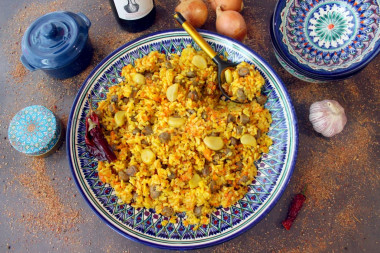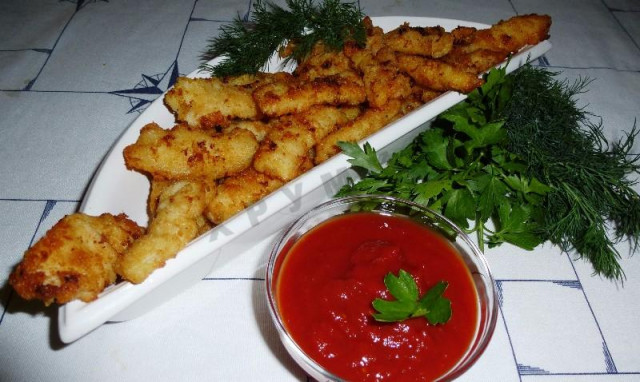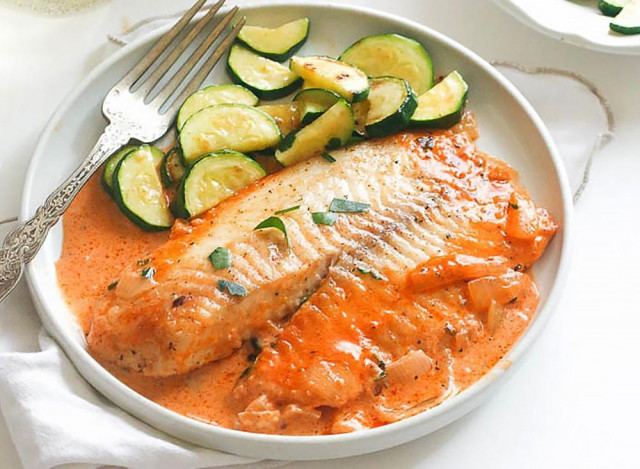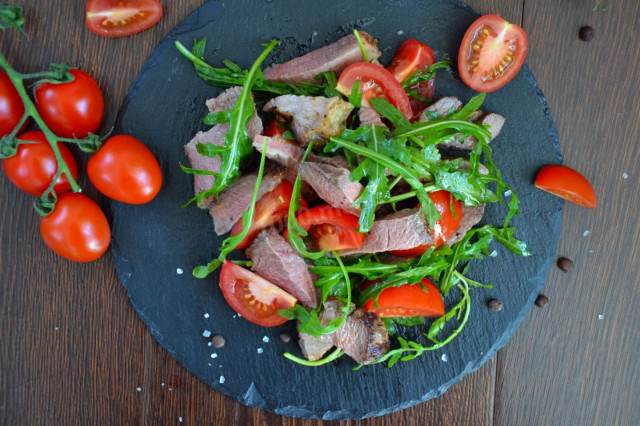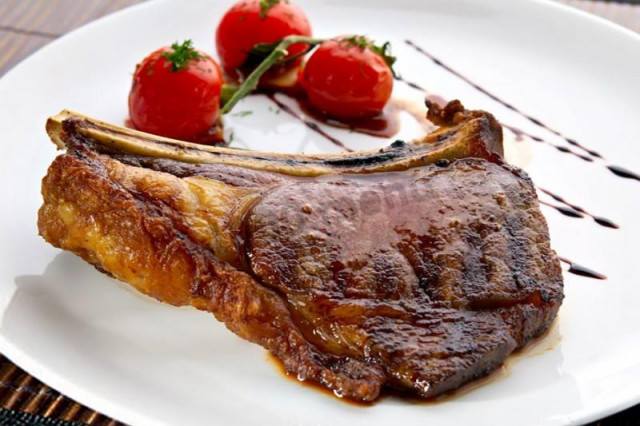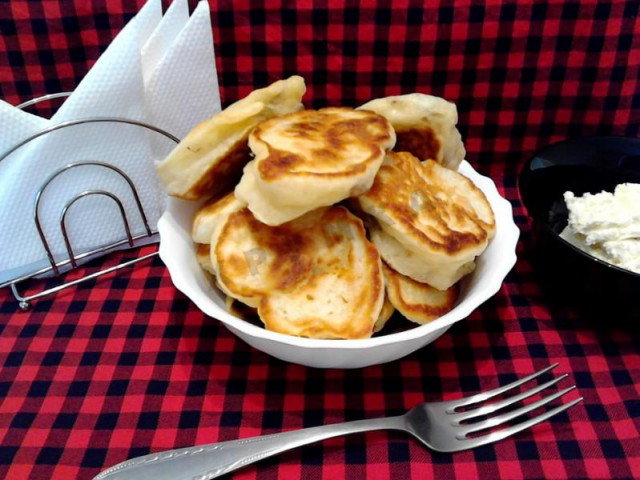Composition / ingredients
Step-by-step cooking
Step 1:
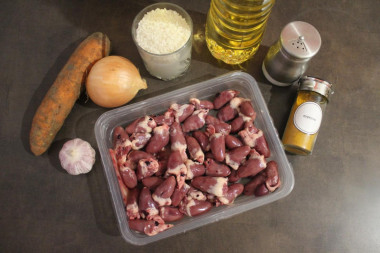
Prepare all the ingredients for cooking pilaf with chicken hearts in a cauldron. Due to the fact that this is one of the smallest offal, hearts can not be cut at all. Thus, it will take very little time to prepare pilaf. However, I still recommend not to be lazy and cut the hearts in half when cooking pilaf.
Step 2:
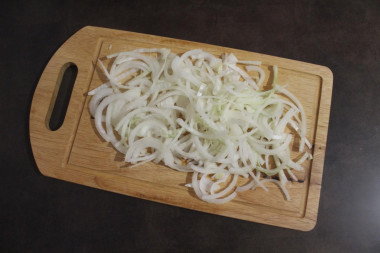
Peel the onion, rinse it under water and cut it into half rings. Transfer it to the cauldron, where the pilaf will be cooked, fry in vegetable oil until slightly golden brown.
Step 3:
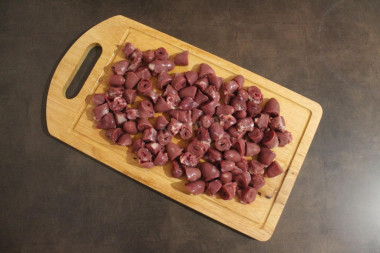
Rinse chicken hearts under running water, cut the veins from them and cut in half. Transfer the prepared hearts to the cauldron to the fried onions and fry until tender for about another 10-15 minutes, without closing the cauldron with a lid.
Step 4:
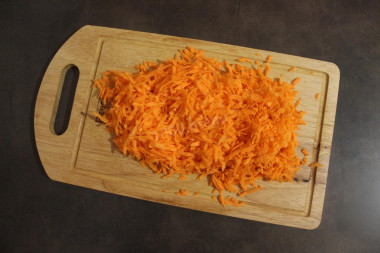
Peel the carrots, rinse under water and grate on a coarse grater. Add to the chicken hearts with onions, add salt. Continue to fry for about another 10 minutes, not forgetting to stir.
Step 5:
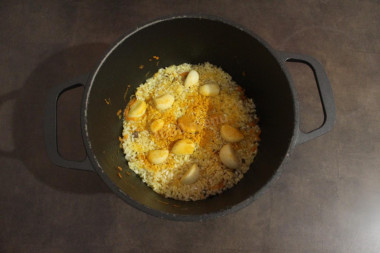
Rinse the rice several times under running water, after which the water should become almost transparent. Disassemble the garlic into cloves and peel off the husks. Pour the washed rice into the cauldron to the fried vegetables and hearts, put garlic cloves on top, pour in water, add turmeric and bring to a boil. When the water boils, cover the cauldron with a lid, reduce the heat and cook the pilaf until tender, about 40-50 minutes, without stirring.
Step 6:
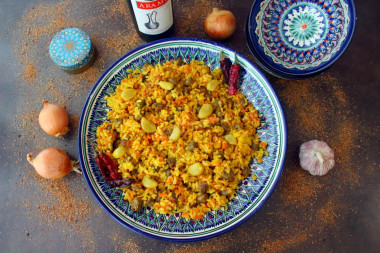
After the specified time, when the pilaf is cooked, open the lid of the cauldron, if desired, remove the garlic cloves, mix everything thoroughly, put on a dish and serve to the table.
The amount of time spent on cooking pilaf will not take more than 30-40 minutes. Then the pilaf itself will reach the readiness in the cauldron. Ground coriander, cumin, barberry and others can be used as spices.
Important! To make rice dishes invariably delicious, read the article about the subtleties of choosing rice and the secrets of its preparation .
Any oils are useful only until a certain temperature is reached - the point of smoking, at which the oil begins to burn and toxic substances, including carcinogens, are formed in it. How to determine the roasting temperature and choose the best oil for frying, and which is better not to use at all, read here .
Since the degree of salinity, sweetness, bitterness, sharpness, acid, burning is individual for everyone, always add spices, spices and seasonings, focusing on your taste! If you put some of the seasonings for the first time, then keep in mind that there are spices that it is especially important not to shift (for example, chili pepper).
Caloric content of the products possible in the composition of the dish
- Onion - 41 kcal/100g
- Raw wild rice - 353 kcal/100g
- Brown raw rice - 360 kcal/100g
- Boiled brown rice - 119 kcal/100g
- White fortified raw rice - 363 kcal/100g
- White fortified boiled rice - 109 kcal/100g
- White rice, steamed, with long grains raw - 369 kcal/100g
- Steamed white rice, boiled with long grains - 106 kcal/100g
- Instant dry rice - 374 kcal/100g
- Instant rice, ready to eat - 109 kcal/100g
- Fig - 344 kcal/100g
- Carrots - 33 kcal/100g
- Dried carrots - 275 kcal/100g
- Boiled carrots - 25 kcal/100g
- Garlic - 143 kcal/100g
- Turmeric - 325 kcal/100g
- Vegetable oil - 873 kcal/100g
- Salt - 0 kcal/100g
- Water - 0 kcal/100g
- Chicken heart - 159 kcal/100g

